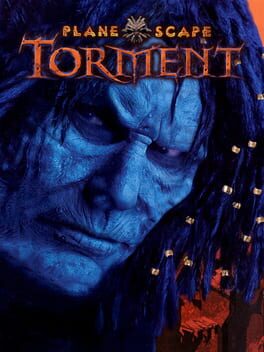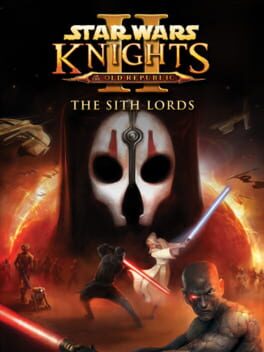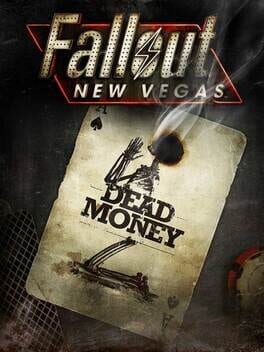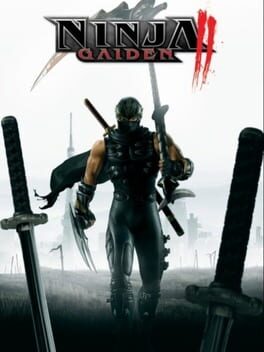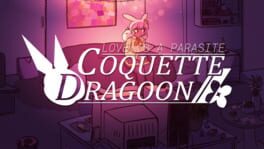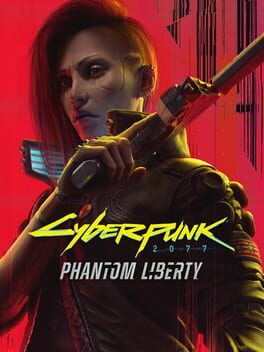Scaregoat
4 reviews liked by Scaregoat
Astro's Playroom
2020
Astro’s Playroom is a wonderful experience that leaves me with far more complicated emotions than something so straightforwardly joyful really would ever want me to. It celebrates everything about Sony’s past, showering you with artifacts that lovingly render hardware ephemera in 4K glory, grounds itself in the present walking you through the innards of your new device and showing off the capabilities of the DualSense, and has no vision of the future. Jumping and moving through the levels is serviceable, and the adaptive triggers and HD rumble feel great and are used great.
The references and cosplays in this get to pretty deep cuts (I gasped at the Jumping Flash fella, then was knocked flat by the Vib Ribbon bunny, and I’m still confident I hallucinated a fucking Siren reference), and it’s delightful to see all of Sony’s back catalog get their due like this. It’s been four years and there are exactly thirteen PS5 console exclusives that could be added to a sequel - five of which have not released yet*. Nine are in established franchises, and over half are sequels or remakes. Seven are rated M for Mature, four are rated T for Teen, and two are so early in development they haven’t been rated by the ESRB. Astro’s Playroom is one of, generously, three games on this list that somebody under the age of twelve would be expected to have any fun at all with, and frankly I think 90% of the appeal would go over their heads given what a nostalgia trip this is.
The PlayStation 1, 2, and 3 are all of a certain type of utopian thinking that died with Web 1.0. Technology and art were synthesized into something for everybody, from children to adults, inventing new design grammar as they went along to create experiences that no medium could ever replicate. Sony developed, funded, and promoted scores of games that aimed at every conceivable demographic and, frequently, aimed at no demographic, believing that pushing the medium forward and creating wholly unique kinds of games creates the kind of brand identity that builds real loyalty.
Games have grown up since then, and they make games for grown-ups now, with such large budgets that true experimentation is quite difficult to justify (unless you have Hideo Kojima-sized star power and trailer editing). This one, especially, is still trying to be in the lineage of what came before, offering a utopian look into the World of PlayStation, but there is that key difference; before, each console offered a glimpse of the future, a foundation for a better tomorrow. Astro’s Playroom tries to show a utopia, but can only really believe that we already experienced it, have seen what it could offer, and have moved on towards greyer horizons.
*I am counting Rebirth here even though there are 48 hours left. Sue me.
The references and cosplays in this get to pretty deep cuts (I gasped at the Jumping Flash fella, then was knocked flat by the Vib Ribbon bunny, and I’m still confident I hallucinated a fucking Siren reference), and it’s delightful to see all of Sony’s back catalog get their due like this. It’s been four years and there are exactly thirteen PS5 console exclusives that could be added to a sequel - five of which have not released yet*. Nine are in established franchises, and over half are sequels or remakes. Seven are rated M for Mature, four are rated T for Teen, and two are so early in development they haven’t been rated by the ESRB. Astro’s Playroom is one of, generously, three games on this list that somebody under the age of twelve would be expected to have any fun at all with, and frankly I think 90% of the appeal would go over their heads given what a nostalgia trip this is.
The PlayStation 1, 2, and 3 are all of a certain type of utopian thinking that died with Web 1.0. Technology and art were synthesized into something for everybody, from children to adults, inventing new design grammar as they went along to create experiences that no medium could ever replicate. Sony developed, funded, and promoted scores of games that aimed at every conceivable demographic and, frequently, aimed at no demographic, believing that pushing the medium forward and creating wholly unique kinds of games creates the kind of brand identity that builds real loyalty.
Games have grown up since then, and they make games for grown-ups now, with such large budgets that true experimentation is quite difficult to justify (unless you have Hideo Kojima-sized star power and trailer editing). This one, especially, is still trying to be in the lineage of what came before, offering a utopian look into the World of PlayStation, but there is that key difference; before, each console offered a glimpse of the future, a foundation for a better tomorrow. Astro’s Playroom tries to show a utopia, but can only really believe that we already experienced it, have seen what it could offer, and have moved on towards greyer horizons.
*I am counting Rebirth here even though there are 48 hours left. Sue me.
It’s incredible that the Yakuza Like A Dragon series exists in this form at all. It’s really easy to discuss these games as a simple comeback story where it was saved from (Western) obscurity by grassroots efforts rallying around 0, but the fact that this insane momentum was met by RGG Studio changing the protagonist and turning it into a triple-A turn-based JRPG when the studio has no prior experience making those and conventional wisdom says the genre is utter sales poison is staggering. The last several mainline games demonstrate a remarkable and admirable disinterest in providing fans with what they expected or wanted, which is doubly impressive when the series is so iterative by nature.
Infinite Wealth iterates a lot on its predecessor, especially. It’s still a turn-based JRPG, and its changes are really, really cool. 7 felt like an experiment that had some great moments but didn’t cohere, an exemplification of the divine mathematics that underpin Dragon Quest and the travails that come when they are fucked with too much. Infinite Wealth still has a major debt to DQ (and some tinges of Chrono Trigger-style enemy shuffling) but manages to be much more unique and self-assured.
For starters, the exp curve is just phenomenally well-considered this time. Gone are the days of 7’s stupid-ass back-to-back grinds, and the scaling for exp and job levels means that it’s very easy to catch up and it can be surprisingly difficult to overlevel. In my playthrough, I kept half of the cast with their default jobs and I had the other half level a side job to 30 before swapping back to default. Team OG ended the game with job levels in the forties, and Team FAFO ended the game with a cumulative sixty job levels. I didn’t feel punished for doing either, as each job kit feels well-rounded and useful even without getting into the insane potential added by skill inheritance, but leveling side jobs felt breezy.
Beyond just the math, job design and skills got so much love - each new job has a really cool and distinct aesthetic, a really fun playstyle, and AoE attacks are way more interesting than they were 7. Circle AoEs might have one edge centered on the targeted enemy, making them finickier for selecting a full group but granting finer control over who else to include, granting damage bonuses for initiating the attack from far away, or having a long line start and end at interesting points. Cone-shaped AoEs are a lot more useful-feeling in this game when their far edge can be centered on the targeted enemy instead of the front tip. It all adds up to make lining up attacks require thought and positioning, which is really nice.
Being able to move around is the most transformational part of the combat changes, easily, but it’s part of a host of other changes that all feel a little small on their own but add up fast. There’s now a proximity bonus for basic attacks that adds in extra hits if they’re made from up close, and getting a proximity hit from behind guarantees crits. Enemy AI is aware of this, and the window to get back attacks is often fleeting at the start of the player’s turn. Having autoattacks be gimped if the party member is pathed far away or wants to hit a specific far-away enemy is frustrating, and there are three major ways to circumvent this - the simplest is to just use a skill to close the gap and do reliable damage.
They can also pick up an environmental object and use that - being able to walk up to ‘em means that they’re an actually valid part of the player’s strategy this time, and on top of their positioning benefits they're a great way to hit elemental weaknesses on people who don’t have certain skills. Otherwise, they can stand nearby another party member and do a combo attack that applies their weapon effects, does full damage at range, and gives their partner a bit of MP back on hit as well. These latter two options are useful and have a variety of obvious applications, but still come with drawbacks - if somebody’s basic attacks do knife or gun damage, then using a ground weapon will override that. Sometimes proximity attacks do way more damage than a combo strike or weapon attack, or the other person in a combo attack will hit an enemy’s elemental resistance and do almost no damage.
On top of all this, there is now a visible knockback indicator for attacks, which adds in yet another layer on top of all of this: knocking an enemy down into a party member does a lot of damage and applies their weapon effect, but knocking them into another enemy does a good bit of AoE, but knocking a large enemy into a wall scores a full knockdown other party members can exploit that otherwise wouldn’t exist. Enemies who block can have their guard broken by either doing a grab-type attack or hitting them from behind; a grab will permanently break it, a back attack will just pierce it for that one attack (and any followups while the enemy is on the ground). This is all then further compounded by the incessant shuffling and jockeying for space that enemies do - every consideration the player will make is based on reading the situation as it exists and trying to capitalize on split-second opportunities. It’s fully turn-based, but it has the pace and feel of an action fight, while retaining the positional focus, comboing, and okizeme of the series’ beat-em-up roots. It’s really fucking good.
The standout is Kiryu’s default job, which exemplifies almost all of this. Style swapping changes the properties of his basic attacks in cool ways on its own; Rush lets him make two weaker attacks per turn, giving him strong AoE or letting him score a guaranteed KO on a weakling before focusing fire on somebody else, Beast lets him do grabs without spending MP and amps up his ability to use ground weapons, and Brawler is the “vanilla” set of attacks that then let him do heat actions under the traditional series rules - be nearby a specific environmental object or otherwise fulfill certain criteria, get into proximity with them, then ace a quick QTE. All three styles get additional action game flair by having their proximity attacks have a short mash or timing prompt, which sells Kiryu both as somebody with a foot firmly planted in real-time and also as a monstrous DPS machine who feels awesome to control.
This mechanical empowerment is contrasted by his narrative role. Ichiban’s stylization as a JRPG hero sells him as somebody strengthened by his friends, but it results in a constant bitter tinge when Kiryu is in the squad. He didn’t always need help, and the character writing does a lot of really satisfying stuff with this disempowerment and reliance for such a stoic, badass lone wolf. Infinite Wealth is a game defined by dichotomies like this - obviously it’s a story split between two countries and two leads, but its themes are equally defined by parallels and mirrors. Everything ultimately comes back to purification or corruption, light and dark, and the terrors and delights of both the past and the future.
It doubles down on everything that makes these games what they are while simultaneously being confident enough to downplay so many of the series’ touchstones, giving the game a feel kinda like a concert that’s half playing the hits and half showing tracks from their next album. The first time a jacket is dramatically removed to reveal the body underneath is an unthinking act of kindness on Ichiban’s behalf, performed without any intent to fight or to show off, but when the player sees the world through Kiryu’s eyes, he can’t help but see ghosts everywhere he goes. These themes of past and future cycles make it hard to not feel a bit of metatext in this being the first full game released after Nagoshi left, and this “changing of the guard” plot can spark worries of being a retread of 7’s themes - and while certain plot elements certainly evoke it, there’s always a knowing tweak to it. 7 is a game about starting over again, of living through a storm and planting seeds for the future once the rubble’s been swept away. Infinite Wealth is more about perpetuating or changing the cycles everyone inhabits - of seeing what’s been done to them and the people before them and trying to break, fix, or continue things.
The returning characters are all well-considered and, equally importantly, most feel unexpected. Few of them feel obligatory, and those that do are given angles and elements that keep them surprising and cathartic nonetheless. Plenty of them have been chewed up and spit back out, some have come back stronger and better, some are indolent, and some lucky few stroll back into the picture feeling just as magnetic and lovable as they were all those years ago. Seeing the game take full advantage of its position as the ninth mainline title in a series stretching back almost twenty years is just as satisfying as seeing how it fantastically it intersects fantastically with the character writing writ large.
Yamai manages to escape the “Majima clone” allegations with aplomb, with a great design, fantastic presence (Koyasu the GOAT), and a satisfyingly mercurial-but-coherent role in the narrative. With the exception of Saeko, whose entire character frustratingly feels like an extension of Ichiban’s arc, literally every single party member is given a lot more to chew on this time. The gap between December 2019 and November 2023 reshuffled a lot and the status quo shifts give people unexpected and lovely positions and angles to view the world. Each little skit and friendship bingo conversation is consistently funny and interesting, and the new party members are literally all bangers. Special shout outs to the job unlock cutscenes creating the implication that Chitose has a Nico Robin-style hyperactive imagination that she does not ever share with anybody; that being said, Tomizawa and Chitose are both incredibly endearing and have a lot of great dramatic and comedic chops. Tomi gets more focus in the front half and Chitose the back, which gives her a bit of an edge in terms of immediate retrospective emotional edge, but both are excellent.
Tomizawa’s arc is tied up with the Barracudas, who are kind of a nexus of the game’s more annoying issues. The gang has a really strong and sympathetic hook that is connected to pretty venomous social commentary, but they rapidly recede from institutional relevance and, just like 7, the themes of homelessness, discrimination, and critiquing the lived effects of Japan’s comically harsh anti-yakuza laws (making it basically impossible to have a normal life certainly makes it effective for killing recruitment, but guys seeking a way out certainly have their work cut out for them…) feel under-discussed after the first act. Additionally, while Yakuza has always had a heightened tone, there are times when, regardless of the player’s tolerances, there will be moments that stretch credulity; especially when combat is done with silly costumes. Sometimes it feels weird to talk about America’s crumbling infrastructure and skyrocketing cost of life only to then beat up three Hungry Hungry Homeless.
These are issues, and they deserve mention, but simultaneously, this is the ninth mainline RGG game. Every issue raised so far has been present to some degree or another in quite literally every single game in the franchise. They’ll affect enjoyment to varying extents, of course, but… I wouldn’t get too mad at a fish for being bad at climbing trees, or at least when I’m neck-deep I’d think I know what pitfalls I'd fallen into.
For all the love heaped on the character writing, the main villains really falter, which is unexpected for this series. There’s good villains and bad villains, and certainly sometimes they contrive excuses for a final boss when punching out a businessman would be unsatisfying, but RGG Studio’s been on a hot streak for antagonists for a good while now. The antagonistic forces in this game feel more like an exercise in thematics than they are actually characters. It’s cool to see a contemporary political thriller manage to make themes of corruption, despoiling paradise, and battling against nature feel grounded within a real-world context and not feel too hacky about it, but despite their screentime they have a terminal lack of real presence or sauce. The villains’ big dramatic showcases pale in comparison to both the quiet and loud moments that accompany their underlings and frenemies. They do create good moments by contriving the protagonists into circumstances that showcase their amazing traits and even better voice actors, but the monologues and physical performances shown off could be bounced off somebody I actually give a shit about and I’d be into it even more than I am.
The cutscene direction, as implied above, is excellent. The stunt coordinator for every game since 6 cut his teeth on Mark DaCascos hood classic Drive (1997), a shitload of tokusatsu, and a little old game called Devil May Cry 3, and it lends the cutscene brawls a sense of physicality and flair that a lot of game cutscenes weirdly can’t do very well. The dramatic scenes have astonishingly good blocking and composition. For how many cutscenes are in this game, they find so many great camera angles, poses, and little vocal quavers to give far more weight to far more than one would expect.
It’s easy to gush about this game, and while it has its flaws and doesn’t always favorably stack up to past games, it feels like a chore to discuss them. Sure, Ichiban got a better moment in 7, Kiryu’s finest hour is still (regrettably) the final scene in Gaiden, and the enemy shuffling just inherently means that the combat’s chaotic, uncontrollable nature will create frustrating situations and missed attacks. It’s maybe not as focused as some other Yakuza games? (I mean, not really, lmao, the only games you might be able to argue that for are 2 and 6, and buddy, 2 is not as focused as you remember it being and 6 is just not interesting.) But at the same time, I don’t really give a fuck.
I love Yakuza most when it’s maximalist, audacious, willing to totally fuck with your expectations, and unafraid to be messy. That’s what I associate the series with and that’s what I want with each new game. That’s what I got here. I was so worried that Kiryu’s return would feel cheap, I was worried that losing Nagoshi would rob the games of an ineffable soul, and Gaiden put the fear of God in me that they would retain the godawful grinds that 7 had (if not double down.) Some mistakes it makes are certainly frustrating and I hope that one day the series will move on.
At the end of the day, it’s hard to not root for the game anyways. A game like this is so special to me. It never treats its past as a burden, and it plants one foot after another into an uncertain future with confidence. You can’t always cure stupid, but the way it endlessly strives towards a better and brighter path, unafraid to experience the sad, bitter, silly, and sweet in all its forms… it’s nice to see a game’s ethos resemble its admirable hero so much.
Infinite Wealth iterates a lot on its predecessor, especially. It’s still a turn-based JRPG, and its changes are really, really cool. 7 felt like an experiment that had some great moments but didn’t cohere, an exemplification of the divine mathematics that underpin Dragon Quest and the travails that come when they are fucked with too much. Infinite Wealth still has a major debt to DQ (and some tinges of Chrono Trigger-style enemy shuffling) but manages to be much more unique and self-assured.
For starters, the exp curve is just phenomenally well-considered this time. Gone are the days of 7’s stupid-ass back-to-back grinds, and the scaling for exp and job levels means that it’s very easy to catch up and it can be surprisingly difficult to overlevel. In my playthrough, I kept half of the cast with their default jobs and I had the other half level a side job to 30 before swapping back to default. Team OG ended the game with job levels in the forties, and Team FAFO ended the game with a cumulative sixty job levels. I didn’t feel punished for doing either, as each job kit feels well-rounded and useful even without getting into the insane potential added by skill inheritance, but leveling side jobs felt breezy.
Beyond just the math, job design and skills got so much love - each new job has a really cool and distinct aesthetic, a really fun playstyle, and AoE attacks are way more interesting than they were 7. Circle AoEs might have one edge centered on the targeted enemy, making them finickier for selecting a full group but granting finer control over who else to include, granting damage bonuses for initiating the attack from far away, or having a long line start and end at interesting points. Cone-shaped AoEs are a lot more useful-feeling in this game when their far edge can be centered on the targeted enemy instead of the front tip. It all adds up to make lining up attacks require thought and positioning, which is really nice.
Being able to move around is the most transformational part of the combat changes, easily, but it’s part of a host of other changes that all feel a little small on their own but add up fast. There’s now a proximity bonus for basic attacks that adds in extra hits if they’re made from up close, and getting a proximity hit from behind guarantees crits. Enemy AI is aware of this, and the window to get back attacks is often fleeting at the start of the player’s turn. Having autoattacks be gimped if the party member is pathed far away or wants to hit a specific far-away enemy is frustrating, and there are three major ways to circumvent this - the simplest is to just use a skill to close the gap and do reliable damage.
They can also pick up an environmental object and use that - being able to walk up to ‘em means that they’re an actually valid part of the player’s strategy this time, and on top of their positioning benefits they're a great way to hit elemental weaknesses on people who don’t have certain skills. Otherwise, they can stand nearby another party member and do a combo attack that applies their weapon effects, does full damage at range, and gives their partner a bit of MP back on hit as well. These latter two options are useful and have a variety of obvious applications, but still come with drawbacks - if somebody’s basic attacks do knife or gun damage, then using a ground weapon will override that. Sometimes proximity attacks do way more damage than a combo strike or weapon attack, or the other person in a combo attack will hit an enemy’s elemental resistance and do almost no damage.
On top of all this, there is now a visible knockback indicator for attacks, which adds in yet another layer on top of all of this: knocking an enemy down into a party member does a lot of damage and applies their weapon effect, but knocking them into another enemy does a good bit of AoE, but knocking a large enemy into a wall scores a full knockdown other party members can exploit that otherwise wouldn’t exist. Enemies who block can have their guard broken by either doing a grab-type attack or hitting them from behind; a grab will permanently break it, a back attack will just pierce it for that one attack (and any followups while the enemy is on the ground). This is all then further compounded by the incessant shuffling and jockeying for space that enemies do - every consideration the player will make is based on reading the situation as it exists and trying to capitalize on split-second opportunities. It’s fully turn-based, but it has the pace and feel of an action fight, while retaining the positional focus, comboing, and okizeme of the series’ beat-em-up roots. It’s really fucking good.
The standout is Kiryu’s default job, which exemplifies almost all of this. Style swapping changes the properties of his basic attacks in cool ways on its own; Rush lets him make two weaker attacks per turn, giving him strong AoE or letting him score a guaranteed KO on a weakling before focusing fire on somebody else, Beast lets him do grabs without spending MP and amps up his ability to use ground weapons, and Brawler is the “vanilla” set of attacks that then let him do heat actions under the traditional series rules - be nearby a specific environmental object or otherwise fulfill certain criteria, get into proximity with them, then ace a quick QTE. All three styles get additional action game flair by having their proximity attacks have a short mash or timing prompt, which sells Kiryu both as somebody with a foot firmly planted in real-time and also as a monstrous DPS machine who feels awesome to control.
This mechanical empowerment is contrasted by his narrative role. Ichiban’s stylization as a JRPG hero sells him as somebody strengthened by his friends, but it results in a constant bitter tinge when Kiryu is in the squad. He didn’t always need help, and the character writing does a lot of really satisfying stuff with this disempowerment and reliance for such a stoic, badass lone wolf. Infinite Wealth is a game defined by dichotomies like this - obviously it’s a story split between two countries and two leads, but its themes are equally defined by parallels and mirrors. Everything ultimately comes back to purification or corruption, light and dark, and the terrors and delights of both the past and the future.
It doubles down on everything that makes these games what they are while simultaneously being confident enough to downplay so many of the series’ touchstones, giving the game a feel kinda like a concert that’s half playing the hits and half showing tracks from their next album. The first time a jacket is dramatically removed to reveal the body underneath is an unthinking act of kindness on Ichiban’s behalf, performed without any intent to fight or to show off, but when the player sees the world through Kiryu’s eyes, he can’t help but see ghosts everywhere he goes. These themes of past and future cycles make it hard to not feel a bit of metatext in this being the first full game released after Nagoshi left, and this “changing of the guard” plot can spark worries of being a retread of 7’s themes - and while certain plot elements certainly evoke it, there’s always a knowing tweak to it. 7 is a game about starting over again, of living through a storm and planting seeds for the future once the rubble’s been swept away. Infinite Wealth is more about perpetuating or changing the cycles everyone inhabits - of seeing what’s been done to them and the people before them and trying to break, fix, or continue things.
The returning characters are all well-considered and, equally importantly, most feel unexpected. Few of them feel obligatory, and those that do are given angles and elements that keep them surprising and cathartic nonetheless. Plenty of them have been chewed up and spit back out, some have come back stronger and better, some are indolent, and some lucky few stroll back into the picture feeling just as magnetic and lovable as they were all those years ago. Seeing the game take full advantage of its position as the ninth mainline title in a series stretching back almost twenty years is just as satisfying as seeing how it fantastically it intersects fantastically with the character writing writ large.
Yamai manages to escape the “Majima clone” allegations with aplomb, with a great design, fantastic presence (Koyasu the GOAT), and a satisfyingly mercurial-but-coherent role in the narrative. With the exception of Saeko, whose entire character frustratingly feels like an extension of Ichiban’s arc, literally every single party member is given a lot more to chew on this time. The gap between December 2019 and November 2023 reshuffled a lot and the status quo shifts give people unexpected and lovely positions and angles to view the world. Each little skit and friendship bingo conversation is consistently funny and interesting, and the new party members are literally all bangers. Special shout outs to the job unlock cutscenes creating the implication that Chitose has a Nico Robin-style hyperactive imagination that she does not ever share with anybody; that being said, Tomizawa and Chitose are both incredibly endearing and have a lot of great dramatic and comedic chops. Tomi gets more focus in the front half and Chitose the back, which gives her a bit of an edge in terms of immediate retrospective emotional edge, but both are excellent.
Tomizawa’s arc is tied up with the Barracudas, who are kind of a nexus of the game’s more annoying issues. The gang has a really strong and sympathetic hook that is connected to pretty venomous social commentary, but they rapidly recede from institutional relevance and, just like 7, the themes of homelessness, discrimination, and critiquing the lived effects of Japan’s comically harsh anti-yakuza laws (making it basically impossible to have a normal life certainly makes it effective for killing recruitment, but guys seeking a way out certainly have their work cut out for them…) feel under-discussed after the first act. Additionally, while Yakuza has always had a heightened tone, there are times when, regardless of the player’s tolerances, there will be moments that stretch credulity; especially when combat is done with silly costumes. Sometimes it feels weird to talk about America’s crumbling infrastructure and skyrocketing cost of life only to then beat up three Hungry Hungry Homeless.
These are issues, and they deserve mention, but simultaneously, this is the ninth mainline RGG game. Every issue raised so far has been present to some degree or another in quite literally every single game in the franchise. They’ll affect enjoyment to varying extents, of course, but… I wouldn’t get too mad at a fish for being bad at climbing trees, or at least when I’m neck-deep I’d think I know what pitfalls I'd fallen into.
For all the love heaped on the character writing, the main villains really falter, which is unexpected for this series. There’s good villains and bad villains, and certainly sometimes they contrive excuses for a final boss when punching out a businessman would be unsatisfying, but RGG Studio’s been on a hot streak for antagonists for a good while now. The antagonistic forces in this game feel more like an exercise in thematics than they are actually characters. It’s cool to see a contemporary political thriller manage to make themes of corruption, despoiling paradise, and battling against nature feel grounded within a real-world context and not feel too hacky about it, but despite their screentime they have a terminal lack of real presence or sauce. The villains’ big dramatic showcases pale in comparison to both the quiet and loud moments that accompany their underlings and frenemies. They do create good moments by contriving the protagonists into circumstances that showcase their amazing traits and even better voice actors, but the monologues and physical performances shown off could be bounced off somebody I actually give a shit about and I’d be into it even more than I am.
The cutscene direction, as implied above, is excellent. The stunt coordinator for every game since 6 cut his teeth on Mark DaCascos hood classic Drive (1997), a shitload of tokusatsu, and a little old game called Devil May Cry 3, and it lends the cutscene brawls a sense of physicality and flair that a lot of game cutscenes weirdly can’t do very well. The dramatic scenes have astonishingly good blocking and composition. For how many cutscenes are in this game, they find so many great camera angles, poses, and little vocal quavers to give far more weight to far more than one would expect.
It’s easy to gush about this game, and while it has its flaws and doesn’t always favorably stack up to past games, it feels like a chore to discuss them. Sure, Ichiban got a better moment in 7, Kiryu’s finest hour is still (regrettably) the final scene in Gaiden, and the enemy shuffling just inherently means that the combat’s chaotic, uncontrollable nature will create frustrating situations and missed attacks. It’s maybe not as focused as some other Yakuza games? (I mean, not really, lmao, the only games you might be able to argue that for are 2 and 6, and buddy, 2 is not as focused as you remember it being and 6 is just not interesting.) But at the same time, I don’t really give a fuck.
I love Yakuza most when it’s maximalist, audacious, willing to totally fuck with your expectations, and unafraid to be messy. That’s what I associate the series with and that’s what I want with each new game. That’s what I got here. I was so worried that Kiryu’s return would feel cheap, I was worried that losing Nagoshi would rob the games of an ineffable soul, and Gaiden put the fear of God in me that they would retain the godawful grinds that 7 had (if not double down.) Some mistakes it makes are certainly frustrating and I hope that one day the series will move on.
At the end of the day, it’s hard to not root for the game anyways. A game like this is so special to me. It never treats its past as a burden, and it plants one foot after another into an uncertain future with confidence. You can’t always cure stupid, but the way it endlessly strives towards a better and brighter path, unafraid to experience the sad, bitter, silly, and sweet in all its forms… it’s nice to see a game’s ethos resemble its admirable hero so much.
Final Fantasy XVI
2023
This review contains spoilers
A game I found to be pretty mediocre all around which I consider to be a worse thing than being an interesting mess like XV. It's a game with a lot of missed potential, especially in regards to the storytelling. A lot of scenes are good in a vacuum but lack the buildup and context to really make use of them. I found it a fairly frustrating experience because the game threatens to be genuinely good at times but never quite gets there.
To start with the positive, the combat eventually becomes fun, though the game doles out your abilities extremely slowly early on causing the first couple of acts to be a bit tedious. You don't get any real character building opportunities until towards the end of the game's third act when you finally have enough eikonic power sets that you have to choose one to leave unequipped. But once you do get access to that stuff, the combat becomes more interesting, if a little "find your own fun". And yes as everyone and their mother has pointed out, the boss fights and the soundtrack both slap immensely. I also ended up quite liking the final antagonist in this one and his presence is a big factor in the game's final act being the most engaging (at least for me).
As for the negative.... well I guess let's start with the gameplay loop. The sidequests are all extremely boring and pointless, and usually feature one-off NPCs with very little personality and very little to say. Game's like this often use sidequests to explore bits of the world's lore in interesting ways, or as a vehicle for character work, but outside of a handful of (still pretty rubbish) quests, most of them are on the level of "bandits have attacked some merchants and we need to save them". This part of the game is stymied significantly by the game's party system meaning the game doesn't know what characters will be present for any given sidequest, so Clive is usually the only character commenting on anything, and our boy doesn't exactly have much to say. It's unfortunate to say the least.
The game misses a lot of it's emotional beats for me by having pivotal information be given to the player either far too early or too late resulting in what could have been an emotional scene not working. An early example of this is Clive's arc in the first act, in which he is forced to come to terms with being his brother's killer. This arc climaxes with Clive fighting his inner demons and accepting the sins of his past, forgiving himself, and gaining the resolve to atone by joining the effort to make the world a better place for the heavily oppressed Bearers. A powerful scene on paper, except that the player has known that his brother is in fact alive for about 5 hours of gameplay, rendering Clive's struggles essentially meaningless. Perhaps they were going for dramatic irony but the scene where Clive comes to terms with a sin the player knows he never committed is played as being triumphant rather than tragic so it's hard to believe that was the intent. This kind of thing happens several times later on, often with pivotal information to the emotional impact of a scene being hidden in the game's lore codex; a lot of tell and not a lot of show.
The cast is largely not very interesting, the vast majority are no-nonsense all-business stoics who rarely show their inner emotions, and the rest are smarmy jokesters who never show their inner emotions. The cast also get very little opportunity to bounce off of each other, and the supporting cast are often sidelined by the plot, meaning you never really get to see much of them, and when you do they only have Clive to talk to, a man who resists being bounced off of with every fiber of his being. The villains largely suffer from being insufficiently set up with a couple of exceptions (Kupka and Ultima) making their downfalls rarely narratively satisfying. They also kill off the most (only?) entertaining main character in the game's second act.
The game tries to go for a more mature tone but is often gratuitous or laughable in it's handling of it's subject matter, ironically making it a much more shallow and juvenile feeling experience than previous games, which tended towards the philosophical. There's really nothing going on beyond the surface level in this one.
All in all the game, weirdly, ends up reminding me of a particularly shoddy season of Kamen Rider: Only the main character gets to do anything, supporting characters are frequently sidelined, the rest only stick around for a single episode, and the plot is fairly surface level, but damn if it isn't exciting when he does a Rider Kick.
To start with the positive, the combat eventually becomes fun, though the game doles out your abilities extremely slowly early on causing the first couple of acts to be a bit tedious. You don't get any real character building opportunities until towards the end of the game's third act when you finally have enough eikonic power sets that you have to choose one to leave unequipped. But once you do get access to that stuff, the combat becomes more interesting, if a little "find your own fun". And yes as everyone and their mother has pointed out, the boss fights and the soundtrack both slap immensely. I also ended up quite liking the final antagonist in this one and his presence is a big factor in the game's final act being the most engaging (at least for me).
As for the negative.... well I guess let's start with the gameplay loop. The sidequests are all extremely boring and pointless, and usually feature one-off NPCs with very little personality and very little to say. Game's like this often use sidequests to explore bits of the world's lore in interesting ways, or as a vehicle for character work, but outside of a handful of (still pretty rubbish) quests, most of them are on the level of "bandits have attacked some merchants and we need to save them". This part of the game is stymied significantly by the game's party system meaning the game doesn't know what characters will be present for any given sidequest, so Clive is usually the only character commenting on anything, and our boy doesn't exactly have much to say. It's unfortunate to say the least.
The game misses a lot of it's emotional beats for me by having pivotal information be given to the player either far too early or too late resulting in what could have been an emotional scene not working. An early example of this is Clive's arc in the first act, in which he is forced to come to terms with being his brother's killer. This arc climaxes with Clive fighting his inner demons and accepting the sins of his past, forgiving himself, and gaining the resolve to atone by joining the effort to make the world a better place for the heavily oppressed Bearers. A powerful scene on paper, except that the player has known that his brother is in fact alive for about 5 hours of gameplay, rendering Clive's struggles essentially meaningless. Perhaps they were going for dramatic irony but the scene where Clive comes to terms with a sin the player knows he never committed is played as being triumphant rather than tragic so it's hard to believe that was the intent. This kind of thing happens several times later on, often with pivotal information to the emotional impact of a scene being hidden in the game's lore codex; a lot of tell and not a lot of show.
The cast is largely not very interesting, the vast majority are no-nonsense all-business stoics who rarely show their inner emotions, and the rest are smarmy jokesters who never show their inner emotions. The cast also get very little opportunity to bounce off of each other, and the supporting cast are often sidelined by the plot, meaning you never really get to see much of them, and when you do they only have Clive to talk to, a man who resists being bounced off of with every fiber of his being. The villains largely suffer from being insufficiently set up with a couple of exceptions (Kupka and Ultima) making their downfalls rarely narratively satisfying. They also kill off the most (only?) entertaining main character in the game's second act.
The game tries to go for a more mature tone but is often gratuitous or laughable in it's handling of it's subject matter, ironically making it a much more shallow and juvenile feeling experience than previous games, which tended towards the philosophical. There's really nothing going on beyond the surface level in this one.
All in all the game, weirdly, ends up reminding me of a particularly shoddy season of Kamen Rider: Only the main character gets to do anything, supporting characters are frequently sidelined, the rest only stick around for a single episode, and the plot is fairly surface level, but damn if it isn't exciting when he does a Rider Kick.
For many, the term FMV springs to mind exaggeration and oddity. Sprouting into popularity in the 90's with CD technology, the medium opened up new doorways in the games market to connect with the film industry. Actors, filmmakers, and producers could all invest in a new medium by recycling assets from their projects while the games industry could profit off of celebrity cultural capital injecting into the industry en masse. ["Repurposing", as Ted Hoff coined it (page 69)](https://books.google.com/books?id=wgsEAAAAMBAJ&lpg=PA69&vq=Johnny%20Mnemonic%3A%20The%20Interactive%20Action%20Movie%20%243%20million&pg=PA69#v=snippet&q=Johnny%20Mnemonic:%20The%20Interactive%20Action%20Movie%20$3%20million&f=false). However, many of these creatives found that translating production into video-based interactive games was an awkward process and the infamous performances from the era remain impressionable to this day.
Rarely though, do we speak of the games of the era that found something deeply beautiful in the form. I don't mean to say that the majorly known FMV games aren't beautiful; rather, that throughout the 90's there was a style of New Age FMV that tapped into a specific beauty of presenting images through the utopian ideals of the era's technology that needs to be recognized specifically aside from FMV at large.
I'm talking about CD-I Tetris. I'm talking about the Angel Paradise series. I'm talking about Aqua World: Umi Monogatari.
Aqua World: Umi Monogatari is a game about experiencing fish. You look at fish, you read about fish, you watch fish swim. That's pretty much the entire game, there's no walking around, no mechanics, you click a button and just watch fish. It's an absolutely breathtaking experience.
Part of the game's enjoyment is similar to that of watching a nature documentary. You get to see creatures moving around their ecosystem and doing their thing. What sets Aqua World: Umi Monogatari apart from nature documentary though is that it doesn't have any film of real fish, all of them are CGI videos of fish rendered in CDROM video. Their animations are repetitive, stiff, and float around in empty blue skyboxes which the camera occasionally teases as a real world space with reflections above. The models are lowpoly and just slightly cartoonish in the lack of details in which they are rendered. At times, they simply hover in space, motionless. And yet, this is where the beauty of the game lies.
Turning on Electric Blue mode, which is a rad name for your fish viewing game mode by the way, the player can choose from a variety of bouncing bubbles that determine a viewing order of fish videos. Upon playing, these CGI fish wander around on screen, each species with a different song to represent their personality. A haunting distorted synth wobbles as the Cresthead Flounder creeps on the ocean floor. A playful little tune sings as the Spotfin Frogfish wanders around curiously. If you have ever stopped in a moment of a videogame to look at the way the virtual ecosystem presents beauty to you then you have experienced a similar bliss as this one.
Aqua World is a game for enjoying the bliss of the videogame image. It is a game for finding peace that resides in the videogame image. It's in this embrace of bliss in the videogame image that I consider it to be "New Age FMV".
There aren't many interactions asked of the player in Aqua World: Umi Monogatari outside of this mode. On the menu there are two other options outside of Electric Blue; Data Fish, and Mermaid. Each of these modes essentially give the player different ways to experience the various species that the game presents. Data Fish presents encyclopedia entries, photographs, and 3D model inspections on the fish. Mermaid lets the player fill an aquarium with the game's included species and swim around to look at them.
It's easy to imagine Aqua World: Umi Monogatari gaining the reputation of being a "non-game" for the lack of deep mechanics for the player to engage in. However, I would argue that to play a videogame is to simply make an emotional connection with an intermix of hardware and software technologies. That can mean that simply moving your fish sprite around a virtual aquarium for the joy of seeing and hearing the ecosystem presented. It can mean reading through the encyclopedia entries of fish and seeing all the little photos and models included. It can mean choosing a selection of fish species clips to view on repeat and fall asleep to.
And what more could we ask for in videogames, than to find something which resonates with ourselves so deeply?
Rarely though, do we speak of the games of the era that found something deeply beautiful in the form. I don't mean to say that the majorly known FMV games aren't beautiful; rather, that throughout the 90's there was a style of New Age FMV that tapped into a specific beauty of presenting images through the utopian ideals of the era's technology that needs to be recognized specifically aside from FMV at large.
I'm talking about CD-I Tetris. I'm talking about the Angel Paradise series. I'm talking about Aqua World: Umi Monogatari.
Aqua World: Umi Monogatari is a game about experiencing fish. You look at fish, you read about fish, you watch fish swim. That's pretty much the entire game, there's no walking around, no mechanics, you click a button and just watch fish. It's an absolutely breathtaking experience.
Part of the game's enjoyment is similar to that of watching a nature documentary. You get to see creatures moving around their ecosystem and doing their thing. What sets Aqua World: Umi Monogatari apart from nature documentary though is that it doesn't have any film of real fish, all of them are CGI videos of fish rendered in CDROM video. Their animations are repetitive, stiff, and float around in empty blue skyboxes which the camera occasionally teases as a real world space with reflections above. The models are lowpoly and just slightly cartoonish in the lack of details in which they are rendered. At times, they simply hover in space, motionless. And yet, this is where the beauty of the game lies.
Turning on Electric Blue mode, which is a rad name for your fish viewing game mode by the way, the player can choose from a variety of bouncing bubbles that determine a viewing order of fish videos. Upon playing, these CGI fish wander around on screen, each species with a different song to represent their personality. A haunting distorted synth wobbles as the Cresthead Flounder creeps on the ocean floor. A playful little tune sings as the Spotfin Frogfish wanders around curiously. If you have ever stopped in a moment of a videogame to look at the way the virtual ecosystem presents beauty to you then you have experienced a similar bliss as this one.
Aqua World is a game for enjoying the bliss of the videogame image. It is a game for finding peace that resides in the videogame image. It's in this embrace of bliss in the videogame image that I consider it to be "New Age FMV".
There aren't many interactions asked of the player in Aqua World: Umi Monogatari outside of this mode. On the menu there are two other options outside of Electric Blue; Data Fish, and Mermaid. Each of these modes essentially give the player different ways to experience the various species that the game presents. Data Fish presents encyclopedia entries, photographs, and 3D model inspections on the fish. Mermaid lets the player fill an aquarium with the game's included species and swim around to look at them.
It's easy to imagine Aqua World: Umi Monogatari gaining the reputation of being a "non-game" for the lack of deep mechanics for the player to engage in. However, I would argue that to play a videogame is to simply make an emotional connection with an intermix of hardware and software technologies. That can mean that simply moving your fish sprite around a virtual aquarium for the joy of seeing and hearing the ecosystem presented. It can mean reading through the encyclopedia entries of fish and seeing all the little photos and models included. It can mean choosing a selection of fish species clips to view on repeat and fall asleep to.
And what more could we ask for in videogames, than to find something which resonates with ourselves so deeply?




